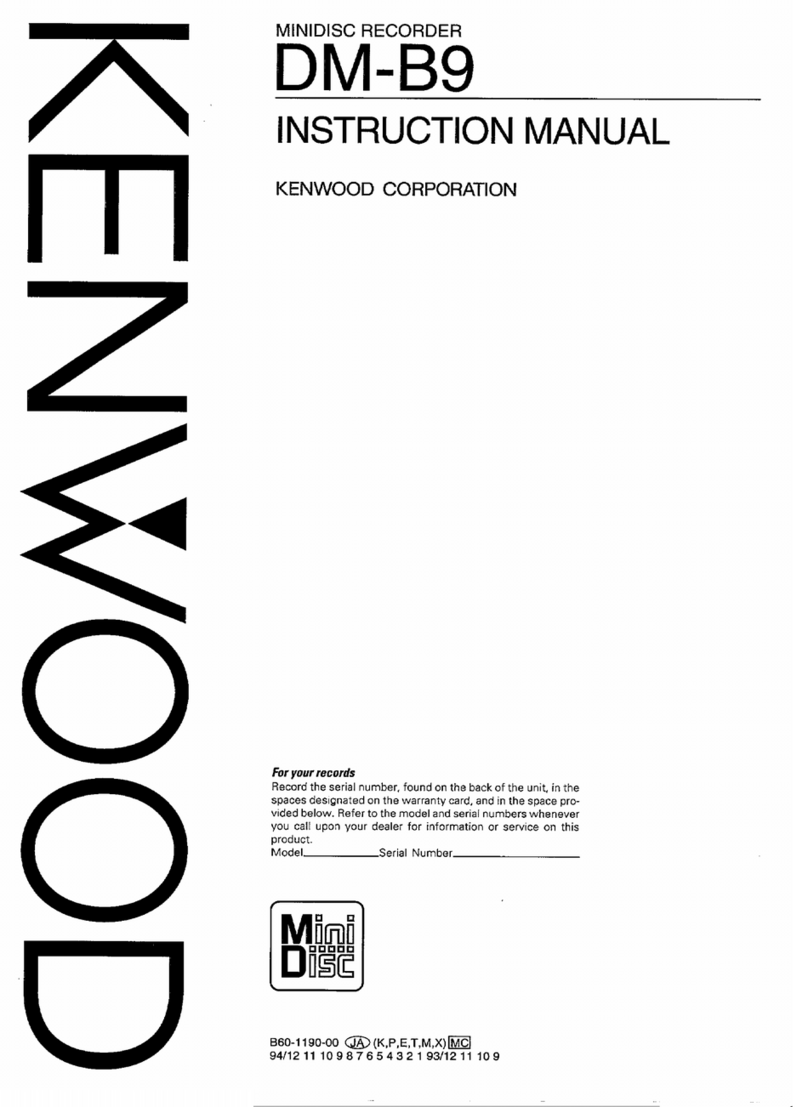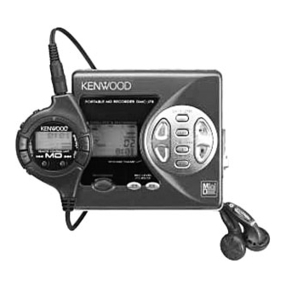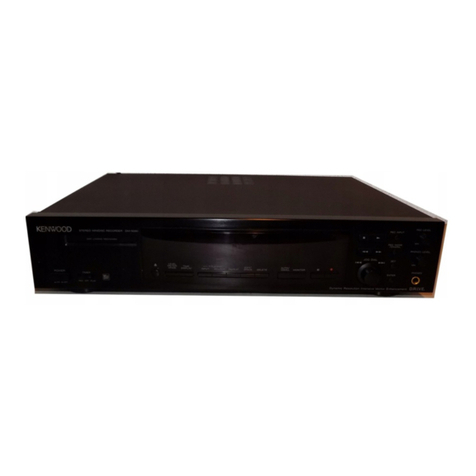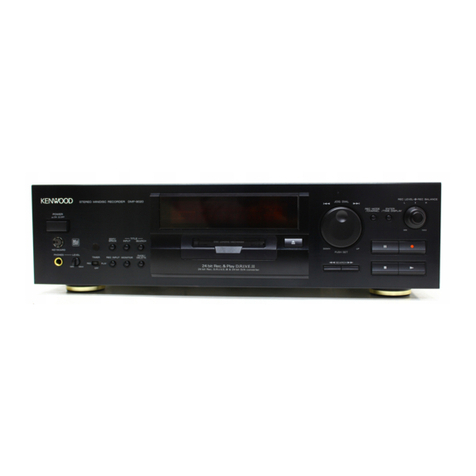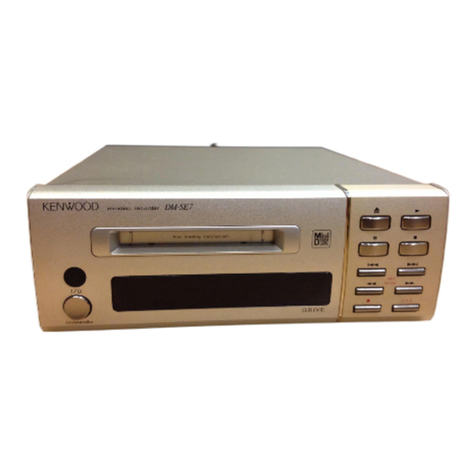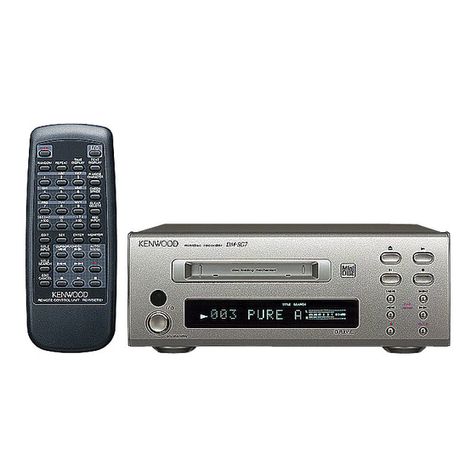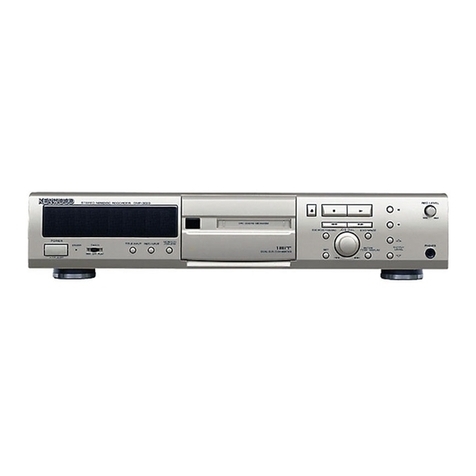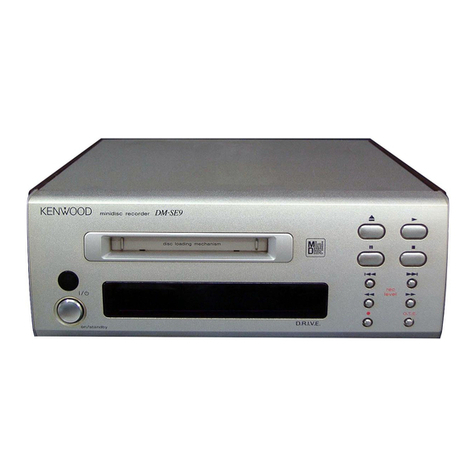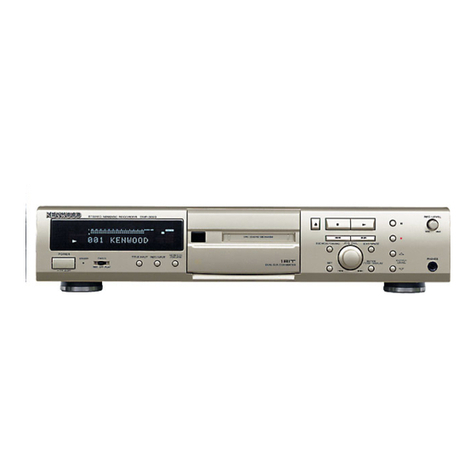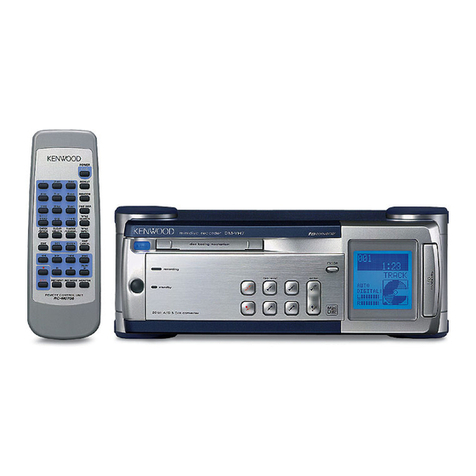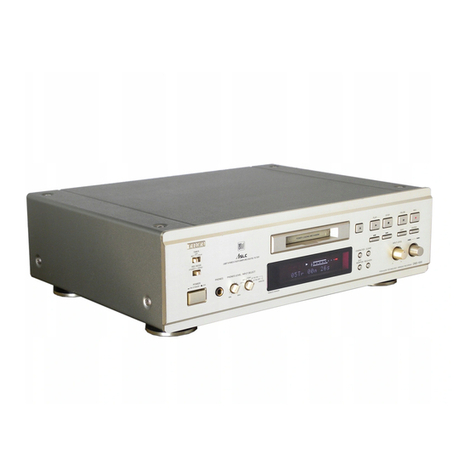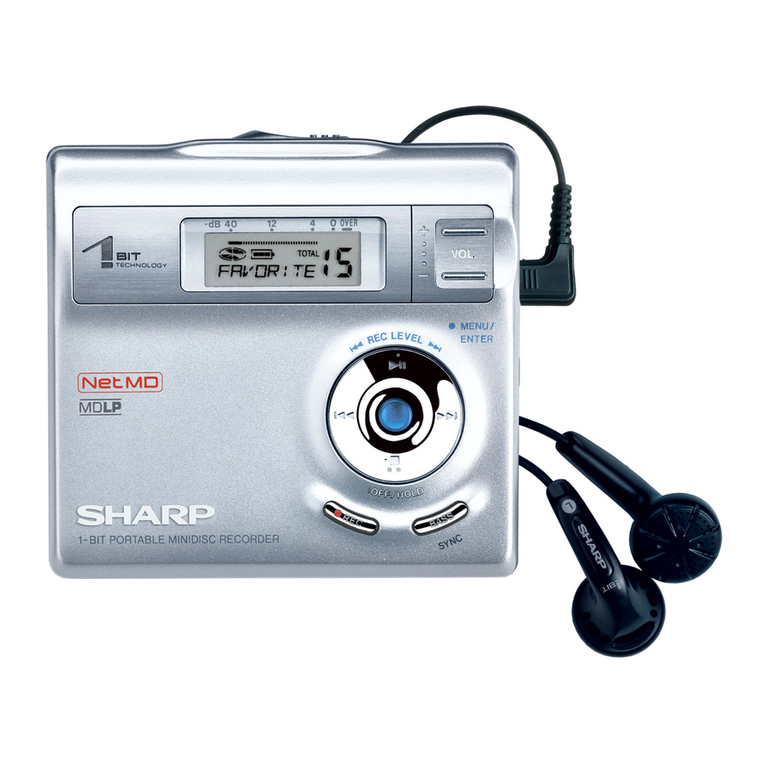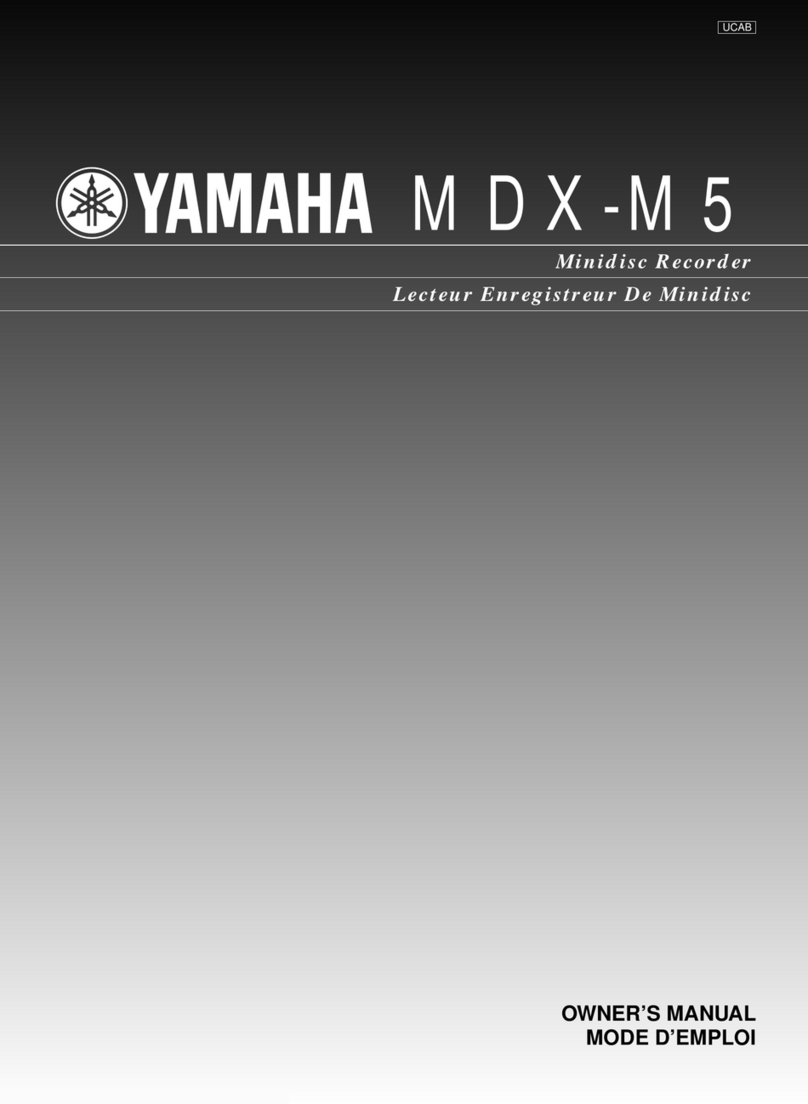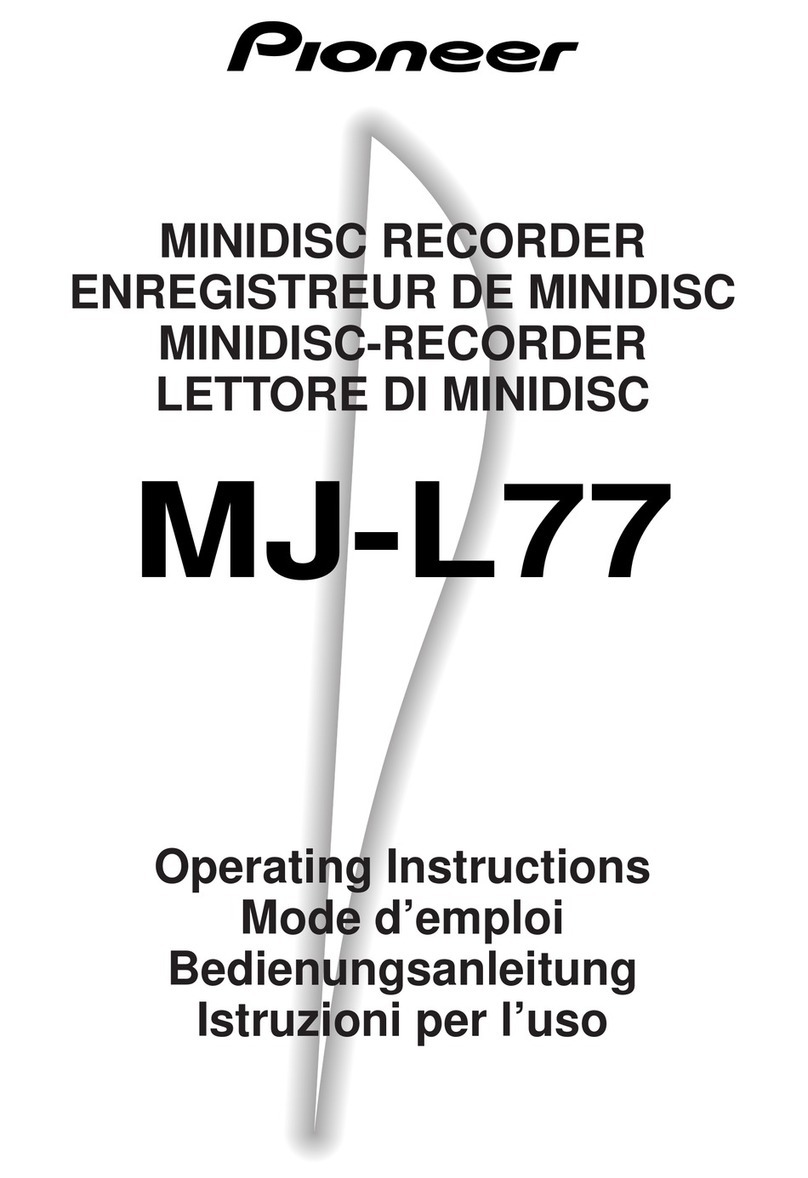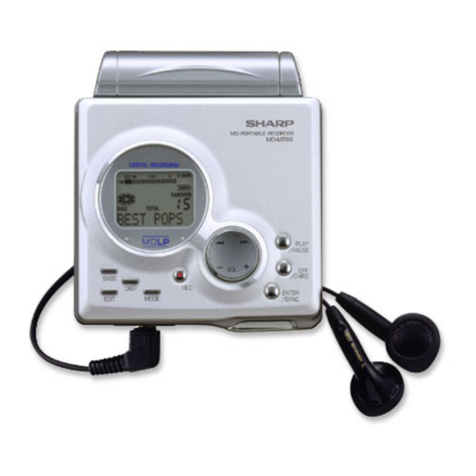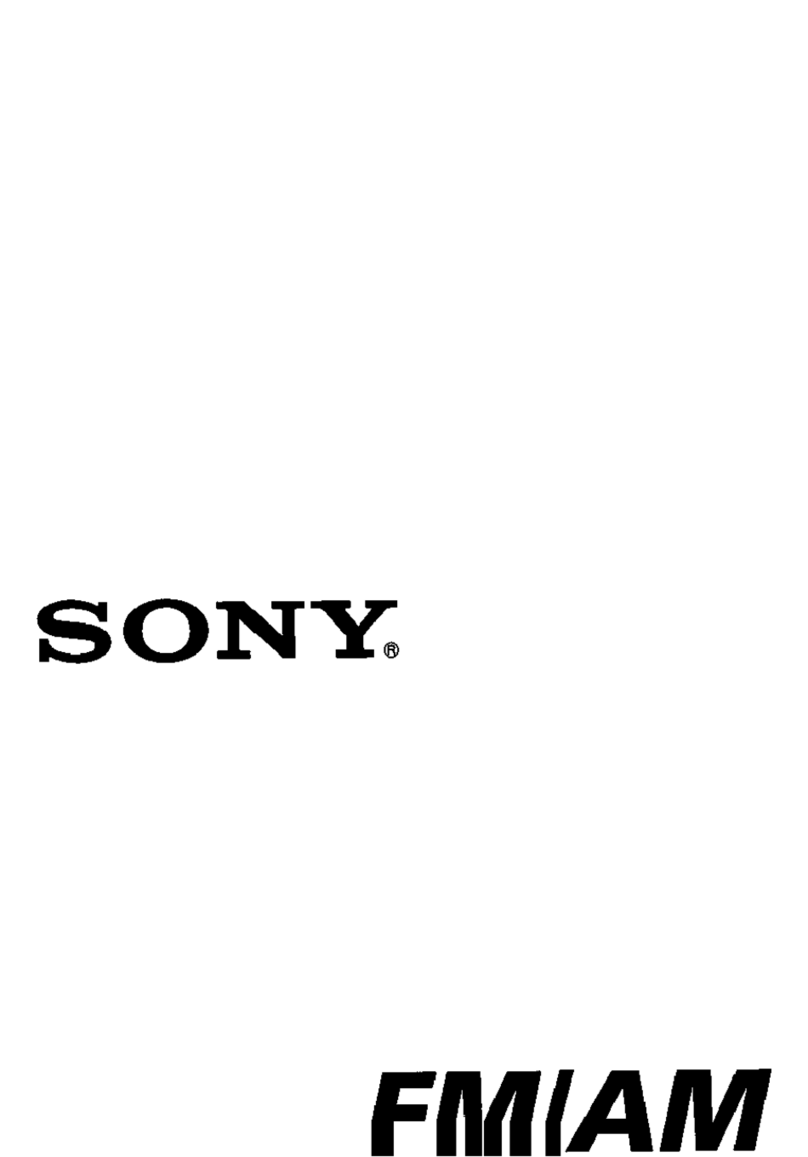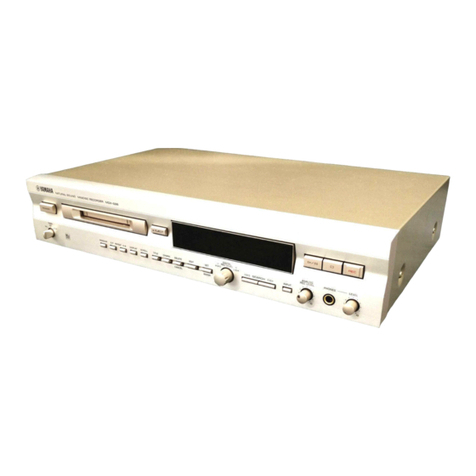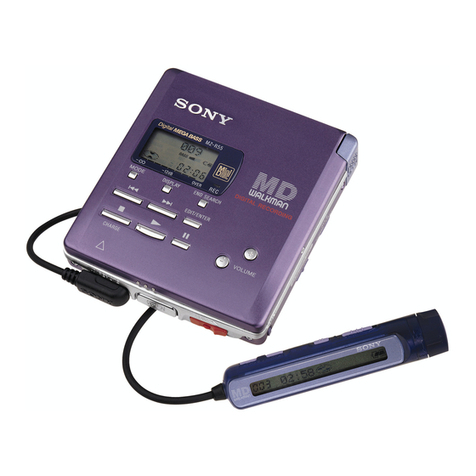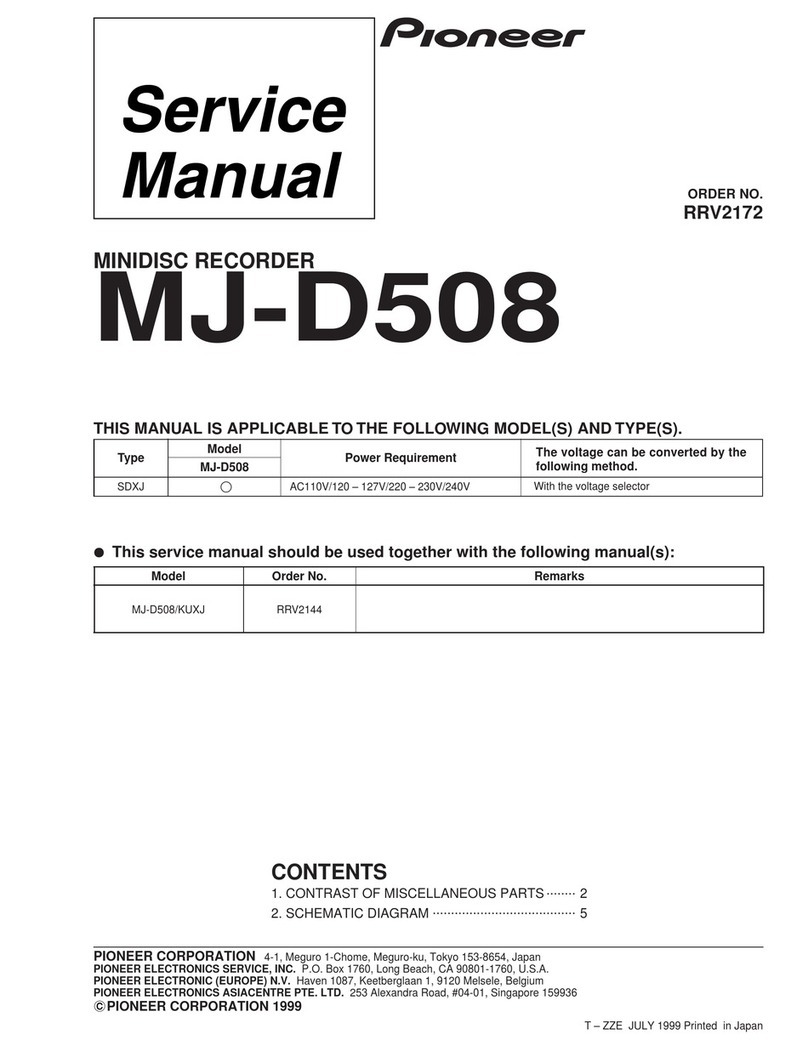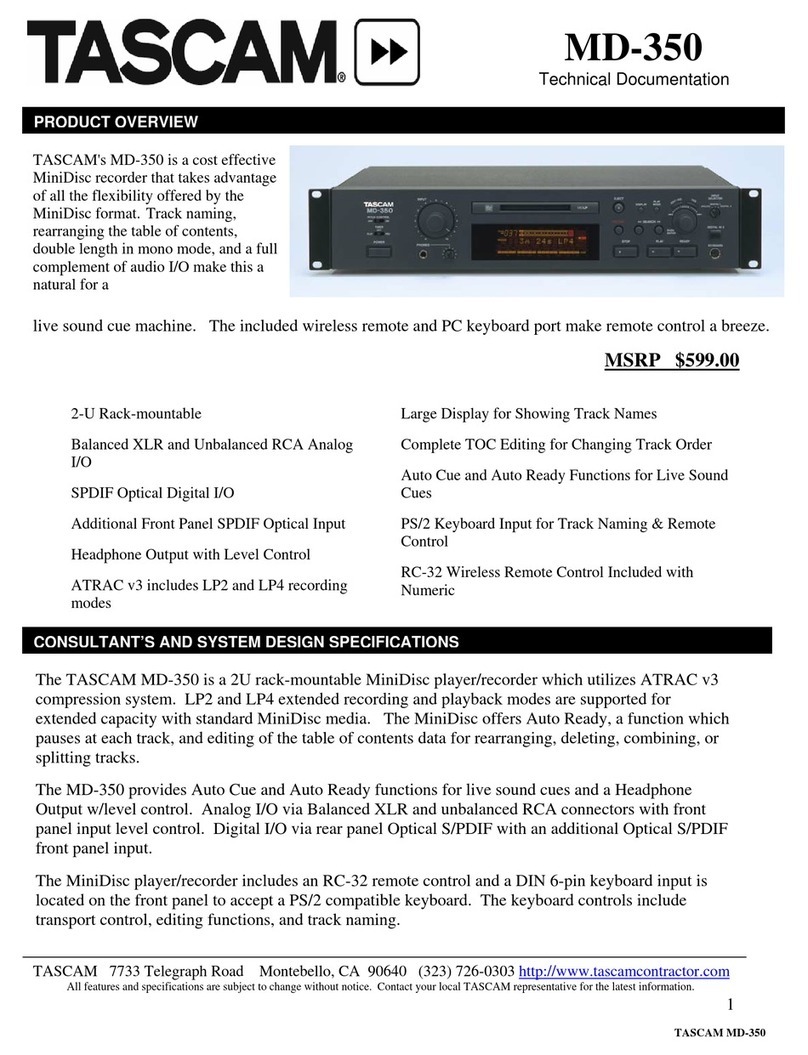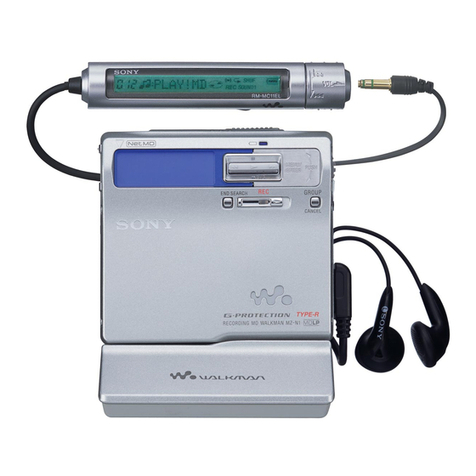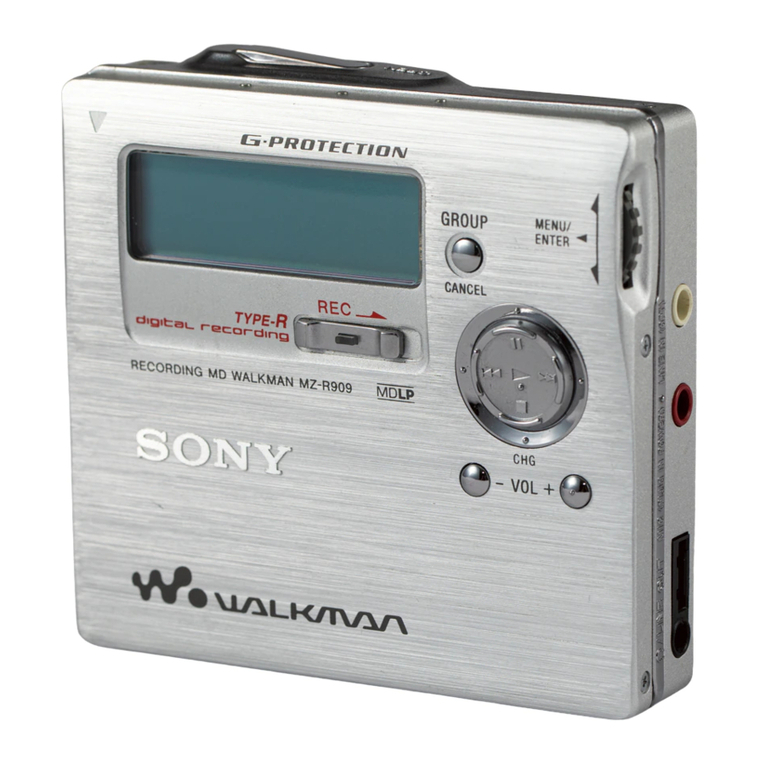1 High reflection disc TG YS-1 (SONY)
2Low reflection disc Recording minidisc
Test disc
MD adjustment needs two types of disc, namely recording disc (low reflection disc) and playback-only disc (high
reflection disc).
Type Test disc
Note: Use the low reflection disc on which music has been recorded.
EEPROM version
Destination
Leaving the TEST mode
(1) Press the STOP button in the TEST mode stop state or version indicating state or whole LCD lighting state.
(2) EEPROM rewrite-enable area updating, adjustment error setting (so as to adjust all the items when the power supply is turned
on in the normal mode)
(3) Change to standby state
Test Mode
1. AUTO 1 Mode • Perform preliminary automatic adjustment.
• If the combination of mechanism and pickup
PWB has been changed, be sure to start from
AUTO1.
2. AUTO 2 Mode • Perform ATT (attenuator) automatic adjustment.
• Perform continuous playback (error rate display,
jump test)
3.
✻✻
✻
✻
✻
✻
✻
✻
MANUAL 1 Mode • Temperature is displayed. (Updating in realtime)
• Seeing the displayed adjustment value, perform
preliminary manual adjustment.
(Error rate indication, jump test)
4. MANUAL 2 Mode • Temperature is displayed. (Updating in realtime)
• Seeing the displayed adjustment value
perform manfully the preliminary adjustment.
(Error rate indication, jump test)
• Continuous playback is performed
(error rate display, jump test).
5. RESULT 1 Mode • The value adjusted in AUTO1 or MANUAL1 is
indicated.
• (Execution in servo "OFF" state").
6. RESULT 2 Mode • The value adjusted in AUTO 2 or MANUAL 2 is
indicated.
• Adjustment value is changed manually.
(error rate display, jump test).
7. TEST-PLAY Mode • Continuous playback from the specified address
is performed.
• 1 line, 10 lines or 400 lines manual jump is
performed.
• C1 error rate display (pit section), ADIP error
rate display (groove section)
• The temperature correction is performed only
when servo start is performed, but the posture
correction is not performed duringcontinuous
playback.
Microcomputer version
Entering the TEST mode
1. Setting at port (in standby state, disc-free state or power nonconnected state)
(1) Set the port as follows.
TEST1 : "Low"
TEST0 : "High"
(2) Press the PLAY button in the standby state (it is allowed to insert the disc or to connect the power supply).
(3) Test Mode STOP [ _ T E S T _ ]
2. Setting by special button operation (in standby state)
(1) Holding down the DISP button and ENTER button, press the PLAY button.
(2) Normal mode setting initialization (BASS setting, VOL setting, etc.)
(3) Indication of microcomputer version for one second [ ]
(4) Whole LCD lighting for 2 seconds
(5) Test Mode STOP [ _ T E S T _ ]
*When the PLAY button is pressed during indication (3) and (4), the process proceeds to (5).
8. TEST-REC Mode • Continuous record from the specified address is
performed.
• Change of record laser output(servo gain is also
changed according to laser output).
• The temperature correction is performed only
when servo start is performed, but the posture
correction is not performed during continuous
recording.
9. NORMAL Mode • The mode is changed from the TEST mode to
the normal mode without adjustment.
• In the normal mode the internal operation mode,
memory capacity, etc. areindicated.
• In the normal mode both temperature correction
and posture correction are perfomed.
10. DIGITAL INPUT mode • Digital input information is displayed.
11.
ERROR INFORMATION
• Error information is displayed.
Mode • Error information is initialized
12. E2-PROM Mode • Factors of digital servo are changed manually.
(Each servo is turned on individually.)
• Cut-off frequency of BASS1, BASS2 and BASS3
is selected manually.
• Temperature detection terminal voltage is
measured, and the reference value is set.
• Defaults are selected and set.
• Setting of EEPROM protect area is updated.
(In case of protect releasing)
13. INNER
These modes are not used for service.
Mode • Determine the position where the INNER switch
is turned on. (only high reflection disc).
• The temperature correction is performed only
when servo start is performed, but the posture
correction is not performed.
Type Parts No.
1 Flat Cable for servicing 16Pin QCNWK0110AFZZ
2 Extension Connector for Service 16Pin RUNTK0460AFZZ
Extension Cable (See Fig.10)
Figure 10
Mecha Flexible PWB
16 pin
16 PIn
CN601
QCNWK0110AFZZ
16pin Flat Cable RUNTK0460AFZZ
Extension PWB for servicing 16pin
PWB side
•Thespindle motorfailstorun.Doestheheadmove
No
DoesthewaveformappearontheIC201pins 24and25after
TEST mode AUTO2 completion and in this state? Check the IC201 periphery.
Yes
Does waveform appear on the IC601 pin 13?
Does waveform appear on IC901 pins 1, 19 and 20?
Replace the spindle motor.
Yes
No L608, IC201, IC901, CN601 and flex, etc. soldering check
No Replace. IC601
Yes
• Recording/playback operation
Insert a low reflection disc, and ascertain audio output by normal playback, and then set TEST REC mode.
Yes
Does the head move down, failing to start record even
when the continuous record mode is set after address? Check voltage of pins 52 and 53 of IC201, pins 2, 4, 7, and 9 of
IC651, pins 3 and 4 of CNS601. Check whether disc is record-
inhibited.
No
Does the RF waveform of TP201 appear when playback is
Does level of pins 34 of IC401 and pin 17 of IC101 change
depending on record and playback?
Is RF pattern output from IC201 pin 50?
Yes
No Check for soldering failure of IC201 .
No Check periphery of IC401 and IC101.
Check whether there is any damage in IC101, periphery of
laser diode.
Yes
Check for defects of IC351 in head drive flexible PWB,
Q351 to 354, head, flexible PWB.
No
Yes
Is audio monitor output given in normal mode LINE IN
record? Check waveforms of pins 9 to 12 of IC501, pins 70 to 73 of
IC201.
Is waveform obtained on IC501 pins 3 and 6?
No
Yes Check whether the pin 7 of IC501 and the pin 59 of IC201 are in
H state.
No
No Does voltage on the IC701 pins 13 to 15 change in case of
record VOLUME UP/DWN?
Is audio waveform observed on the pins 18 and 19 of
IC703? Yes
Check whether input waveform is observed on the pins 5
and 6 of IC703.
Yes
